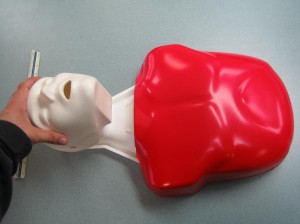Even though immediate administration of basic first aid increases the patient’s survivability, taking a few seconds to check for the patient’s ABC is still a must for rescuers, regardless of their experience. This is the only way to ensure that proper first aid techniques are applied in accordance with the current status of the patient. Here are some of the basics of checking for the patient’s ABC.
What does ABC stand for?
ABC stands for Airway, Breathing and Circulation. These are the first three things that rescuers should asses before administering any type of first aid technique. Checking for these signs ensures that the life-saving techniques that will be performed such as CPR will be well-received by the patient’s body which increases the efficiency of these techniques and that the efforts of the rescuers will not simply go to waste. Here is a short rundown of these three signs and how they can be assessed properly.
Airway
Assessing the airway ensures that air can travel adequately travel to and from the patient’s lungs and that there is not blockage in any of the organs that are responsible for breathing. To check the airway, roll the patient onto his or her back properly to avoid any bone damage. For patients who seem to have fractures or any bone injury, make sure that the head, neck and back all form a straight line. If the patient seems to have difficulty, rescuers can tilt the head of the patient backwards. This can be done by kneeling beside the patient and tilting the head of the patient by placing one hand on the patients forehead and using the fingers of the other hand to lift the patient’s chin.

Breathing
After assessing the airway of the patient, it is now time to check if the patient is actually breathing. This can be done by placing the cheek as near as possible to the patient’s mouth to feel any breath coming in or out of the mouth or the nose. At the same time, rescuers should also observe the patient’s chest. A rise and fall movement in the chest area indicates the presence of breathing. Rescuers should continue assessing the patient’s breath for 5-10 seconds to ensure regularity.
Circulation
Circulation is best assessed by looking for a pulse in the throat or the carotid artery or in the left side of the chest where the heart is located.
Many training centers do not tackle these ABC’s. This is why looking for a program that teaches students regarding this basic first aid information should be a goal for future students.